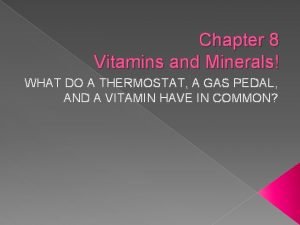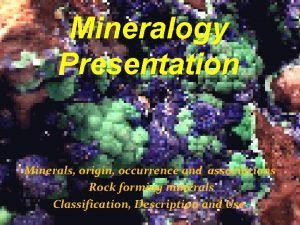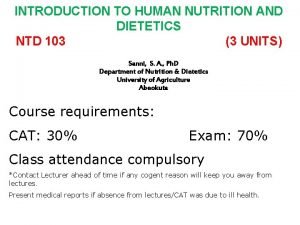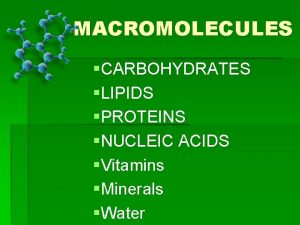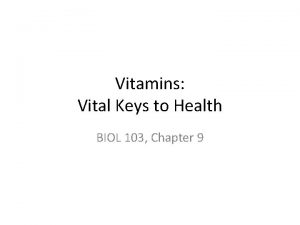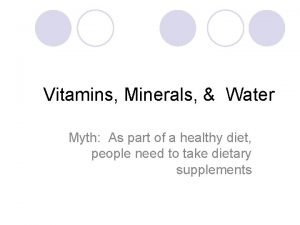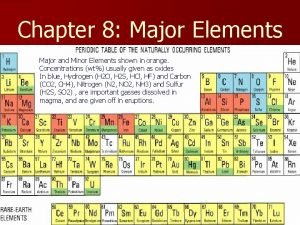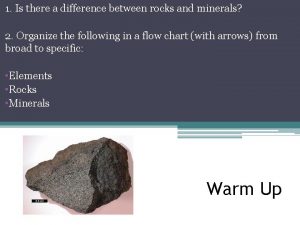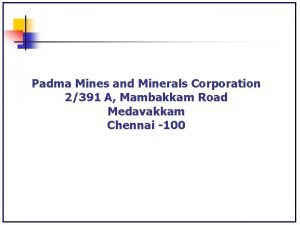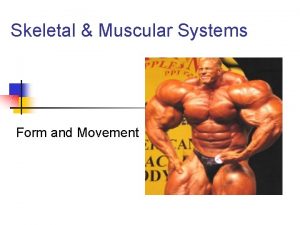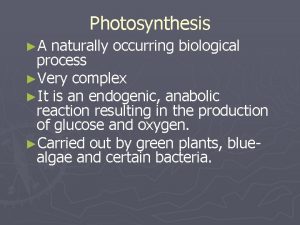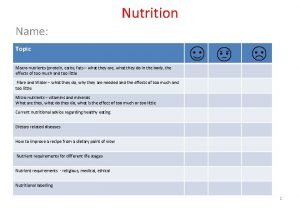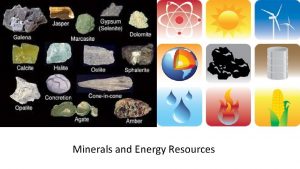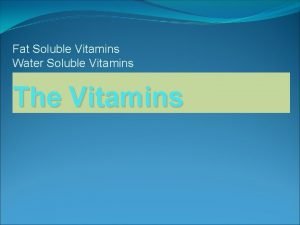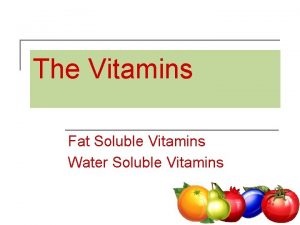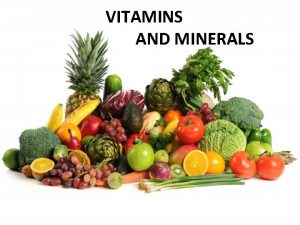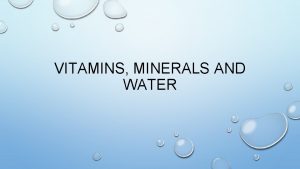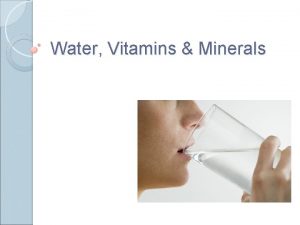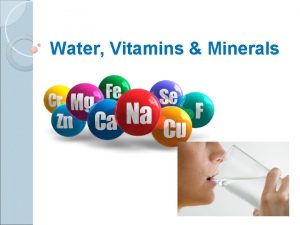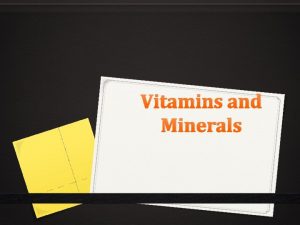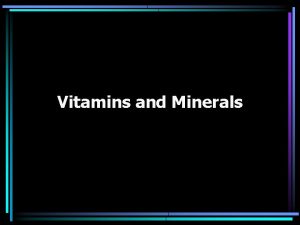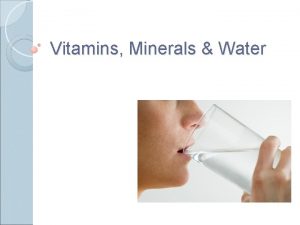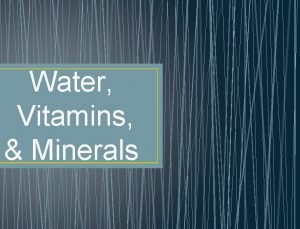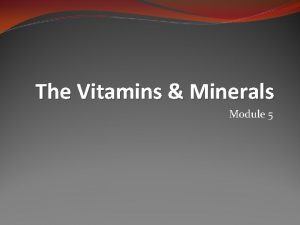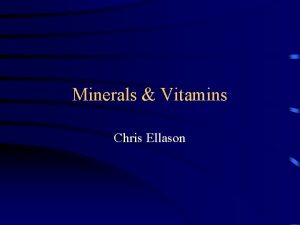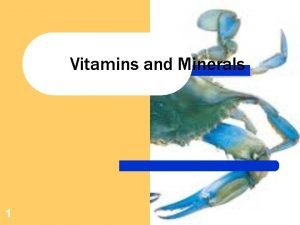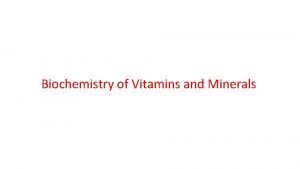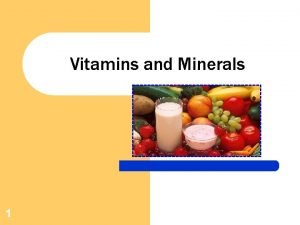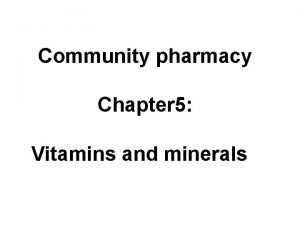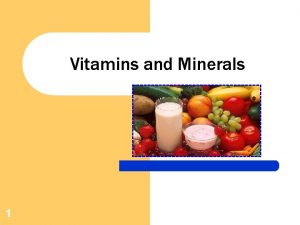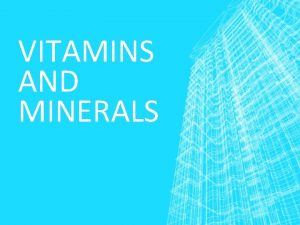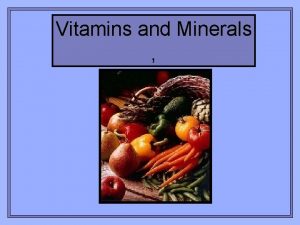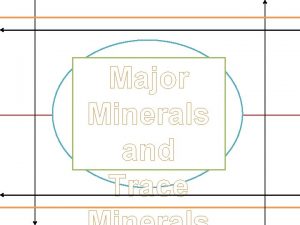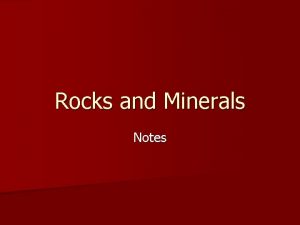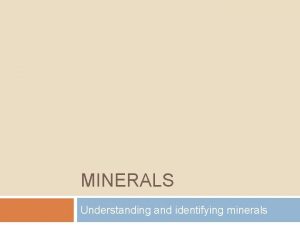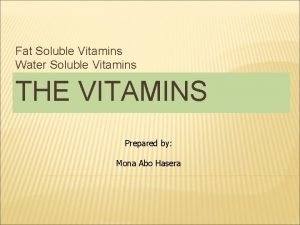VITAMINS AND MINERALS VITAMINS Function of Vitamins All





























- Slides: 29

VITAMINS AND MINERALS

VITAMINS

Function of Vitamins • All of the following require vitamins to function properly: – Nerves – Muscles – Skin

Types of Vitamins • Fat Soluble Vitamins – Vitamins that are transported through the body by being absorbed and stored in fat. • Water Soluble Vitamins – Vitamins that are dissolved in water and transported through the body.

Types of Vitamins Fat Soluble • Vitamin A • Vitamin D • Vitamin E • Vitamin K Water Soluble • Vitamin C • Folate

Vitamin A • Function – Enhances hair and skin • Prevents – Night blindness • Food Sources – Red, orange and dark green vegetables

Vitamin D • Called the “Sunshine Vitamin” • Function – Manufactured by the body with exposure to sunlight. – Works with the body to build and maintain healthy bones and teeth.

Vitamin D • Prevents – Rickets (softening of the bones) • Food Sources – Added to milk products • Amount can be identified by reading the food labels.

Vitamin E • Function – Protects membranes of white and red blood cells. • Prevents – Neurological problems • Food Sources – Oils (corn, olive, sunflower) – Nuts (almonds, hazelnuts and peanuts)

Vitamin K • Function – Helps blood to clot • Prevents – Hemorrhaging • Food Sources – Dark green vegetables

Vitamin C • Function – Helps to form collagen which holds the cells together and aids in healing. • Prevents – Scurvy (swollen bleeding gums and the opening of previously healed wounds) • Food Sources – Citrus fruits, strawberries, broccoli and tomatoes

Folate • Also known as: – Folic Acid – Folacin

Folate • Prevents – Neural tube birth disorders, such as Spina Bifida – The fetal spinal column doesn’t close completely during the first month of pregnancy. There is nerve damage that causes paralysis of the legs.

Folate • Neural tube damage occurs during the first weeks of pregnancy before a woman may realize she is pregnant. • Meeting the folate requirements before becoming pregnant is essential for prevention.

Folate • Food Sources – Dark Green Leafy Vegetables – Broccoli – Liver – Legumes – Fortified breakfast cereals

MINERALS

Function of Minerals • Most minerals help build strong bones and teeth. • Others are used to make substances that the body needs. • Minerals are usually needed in tiny amounts, but are critical to good health.

Food Sources of Minerals • Minerals can be found in most foods – Dairy products – Animal products – Fruits – Vegetables

Types of Minerals • Macro Minerals • Trace or Micro Minerals • Electrolytes

Macro Minerals • Define – Needed in great quantities in the body • Types – Calcium

Calcium • One of the most common mineral deficiencies in the United States. • Calcium deficiency causes osteoporosis. • Osteoporosis causes bones to gradually lose their minerals which makes them become weak and frail. • Good sources of calcium are found in dairy products.

Trace or Micro Minerals • Define – Needed in smaller quantities in the body, but are just as essential as macro minerals. • Types – Iron

Iron • The other most common mineral deficiencies in the United States. • Iron deficiency causes anemia, or low red blood cell formation. • Animal products provide excellent sources of iron. • Amount can be identified by reading the food labels.

Electrolytes • Define – Helps maintain the fluid balance in the body – Helps maintain the heartbeat – Helps muscle and nerve action – Can easily become imbalanced in cases of dehydration, illness and diarrhea

Electrolytes • Amounts can be identified by reading the food labels. • Types – Sodium – Potassium

Potassium • Food Sources – Bananas – Potatoes

Sodium • There is so much sodium in the food supply that it is more of a concern to have too much rather than not enough. • Amount can be identified by reading the food labels.

Sodium • If an athlete is trying to replace sodium, then some saltier foods are alright. • Bread and milk contain some sodium and are good for athletes as well.

Summary • Vitamins and minerals are vital for a healthy diet. • Without them, our bodies suffer from many illnesses that can be prevented. • Eating a well balanced diet allows your body to benefit from the variety of vitamins and minerals found in foods.
 Chapter 8 vitamins and minerals
Chapter 8 vitamins and minerals Importance of rocks
Importance of rocks Ntd nutrition
Ntd nutrition Site:slidetodoc.com
Site:slidetodoc.com Dairy produts
Dairy produts Water soluble vitamins vs fat soluble vitamins
Water soluble vitamins vs fat soluble vitamins Name 3 points
Name 3 points What are vitamins functions
What are vitamins functions Macronutrients elements
Macronutrients elements Types of rocks song
Types of rocks song Why is bowen's reaction series important
Why is bowen's reaction series important Major elements
Major elements Difference between minerals and rocks
Difference between minerals and rocks Sedimentary rock concept map
Sedimentary rock concept map Poem about minerals and rocks 3 stanza
Poem about minerals and rocks 3 stanza Absorbs water and minerals
Absorbs water and minerals Difference between rock and stone
Difference between rock and stone Padma mines and minerals corporation
Padma mines and minerals corporation Stores minerals and anchors muscles
Stores minerals and anchors muscles Cumbria minerals and waste local plan
Cumbria minerals and waste local plan What are resources that can be replaced
What are resources that can be replaced Minerals and fuels
Minerals and fuels Minerals sources functions and deficiency chart
Minerals sources functions and deficiency chart Minerals and fuels
Minerals and fuels Rocks and minerals
Rocks and minerals Isogyres mineralogy
Isogyres mineralogy She's all states and all princes i
She's all states and all princes i Difference between water soluble and fat soluble vitamins
Difference between water soluble and fat soluble vitamins Vitamins and their other names
Vitamins and their other names Vital+ amine
Vital+ amine
